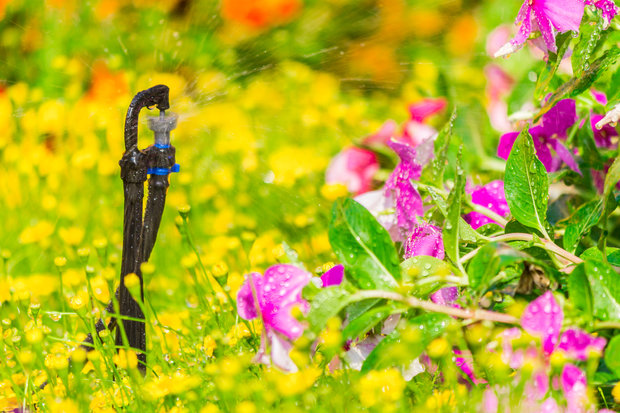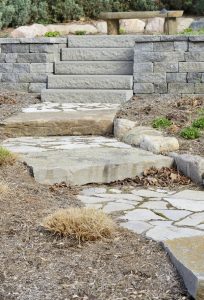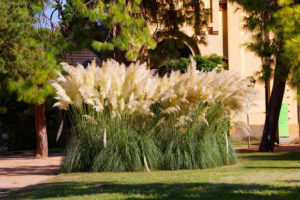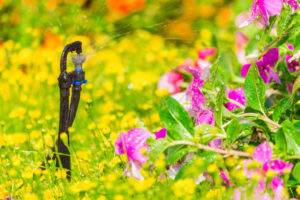No wonder we’re witnessing record-level droughts. Though a lot of the US has recovered from the catastrophic drought conditions we saw a few years ago, globally, we’re not in the clear. According to the NOAA, almost every continent on the US has been impacted by dry conditions this year. Kenya, in particular, is suffering right now from a record-setting drought, which has been devastating to local farmers and wildlife alike. That’s a pretty big issue to be up against, but fortunately, we can all play a small part in conserving water—right in our own backyards. From efficient plants to water-smart landscaping, your lawn can certainly do its part to keep waste at bay. Read on to find out how.
Mulch the Eco-friendly Way
Many new gardeners assume that mulching is just for appearances—but did you know it does a lot more for your beds than covering up the dirt? Mulch not only roots out troublesome weeds, it conserves moisture in the soil. A layer of it around plants more closely mirrors natural conditions, since forested areas are typically topped with nutrient-rich plant debris. Inside this mixture of twigs, bark, and leaves are beneficial microbes that subsist off the decaying matter. As these organisms break down organic material, transforming it into soil, they give off a sticky, almost glue-like substance that holds the topsoil together so that it has a crumbly texture. Soil with this texture holds in water much more effectively than other consistencies. Mulching with organic materials like leaves or pine needles kicks off this natural process, so that the soil is less likely to dry out—and it also forms a protective layer that keeps water from evaporating as fast.
Forget the Landscaping—Go for Hardscaping
Turf is overrated, at least where water conservation is concerned. Hardscaping, the collective name for stone features used to landscape a garden or exterior area, gets points for being drought-tolerant—and when used properly, can really add some modern verve to your lawn. A terraced backyard, for instance, uses stone boundary walls to create multiple tiers—which can then be topped by native plants or beds of pebbles.
Other options? If you have a smaller lawn, try extending your paved patio out further from the back door. Leave openings for attractive beds that provide a peak of color, without being too hard on your water profile. Or add a “dry creek bed” finished with appealing native stones and pebbles—as a bonus, permeable paving like this helps collect rainfall and return it to the soil. Curved paths, steps, and stacked retaining walls all offer notes of interest in the hardscaped yard. And the best part? You’ll never forget to water them!
Spruce Up Your Beds with Ornamental Grasses and Succulents
Most lawns are pretty thirsty—experts recommend giving your grass about one to two inches of water a week, which is about two-thirds of a gallon for every square foot. That means that if you’ve got quite a bit of turf on your hands, your lawn could be practically guzzling water!
The alternatives take a little more planning—and a designer’s eye—but they’re definitely worth it when you weigh your water footprint. In particular, native ornamental grasses make for a pretty stunning display. Try pairing two species at varying heights for a more polished look. These work well along a fence or border wall, or in place of less drought-tolerant shrubs against your house or beside an entryway. You should try to pick varieties that are native to your area. If you need help with that, the National Wildlife Federation’s Native Plant Finder can help you identify some that will work.
Succulent gardens also make a nice addition to the water-efficient home. There are a number of desert-hailing plants, such as Yucca, Agave, Sempervivum, Delosperma, Opuntia, and Sedum, that can survive extremely low temps. These species require very little water—in fact, if you live in a rainier part of the country, you may want to cover them occasionally to prevent overwatering. Likewise, you may need to mix coarse sand or pumice to give them the consistency they like. According to the Alliance for Water Efficiency, xeriscaped areas in Las Vegas saved the city 39 percent of its annual summer water consumption, so these kinds of improvements definitely have a lasting effect.
When You Do Water, Do It Wisely
No matter how hardy the plant, most species need a little supplemental watering every once and awhile, especially during the driest parts of the year. Certain techniques definitely are more water-efficient than others, however. For instance, never water your garden during the hottest part of the day. Not only will the water evaporate more quickly, meaning your plants don’t get the good soak they deserve, if the sunlight is very intense, the reflection from the water droplets could damage the leaves.
Likewise, you can adopt practices that will minimize runoff as well. For instance, a short watering—say one to four minutes—three to four times in a day is much more efficient than a long soak. If you must have the sprinkler, turn it off after a rain or in the winter, when most plants are dormant. Investigate a water-saving smart irrigation system. Using your input, such as your soil type, area, and sun exposure, these WiFi-connected sprinkler controllers are able to create a customized watering schedule that delivers just the right amount of irrigation— no more, no less. Many can even access weather reports to automatically cancel watering if it’s just rained. And the EPA estimates that products labeled with its WaterSense efficiency rating save an average 9,000 gallons of water per household annually. That’s a lot of water for one little change! With updates like these, the future of our water table is right in your






